I Dig Sports
China Open: Bianca Andreescu to meet Naomi Osaka in quarter-finals
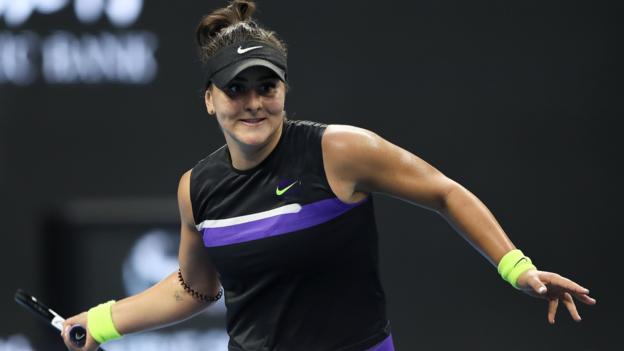
Bianca Andreescu will play Naomi Osaka for the first time after both players advanced to the quarter-finals of the China Open.
Osaka, 21, lost only four games with a 6-4 6-0 win over USA's Alison Riske, before Andreescu came past American qualifier Jennifer Brady 6-1 6-3.
The 19-year-old Canadian is on a 16-match-winning streak, which saw her lift the US Open trophy last month.
World number four Osaka, from Japan, is the current Australian Open Champion.
Britain's Evans loses to big-serving Isner in Beijing
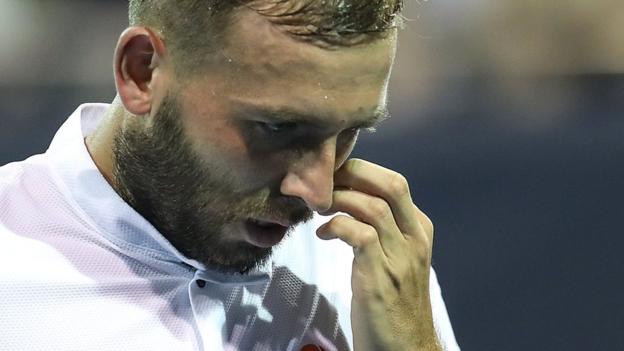
Dan Evans' bid to become the British number one ended when he lost in straight sets to John Isner in the second round of the China Open.
Evans could not break the American's serve and was beaten 7-6 (7-3) 7-5.
The 29-year-old, the world number 48, would have overtaken compatriot Kyle Edmund if he had reached the last four.
Evans' defeat leaves Andy Murray, who faces top-seed Dominic Thiem of Austria in the last eight on Friday, as the sole remaining Briton in the field.
Evans earned two break points in the ninth game of the first set but could not take either and big-serving Isner, 34, took the tie-break 7-3.
The second set looked to be heading for a tie-break too, until Isner found some magic to secure the only break of serve in the match and book a quarter-final spot against Stefanos Tsitsipas.
The Greek player beat defending champion Nikoloz Basilashvili of Georgia 4-6 6-3 6-2.
Sweden, Germany, Austria: Destination China!

The race to reach the 2019 ITTF World Tour Grand Finals – the prestigious end-of-year showpiece event, which will be held in Zhengzhou, China between 12–15 December – is entering its dramatic final stages with three World Tour events left on the menu.
While several star players have already accumulated enough World Tour points to guarantee their tickets to Zhengzhou, more than half of the total line-up is yet to be confirmed. In order to qualify, players need to finish among the top 16 in the men’s and women’s competitions and among the top 8 in men’s, women’s and mixed doubles categories.
Yes, the ITTF World Tour Grand Finals are fast approaching, but the road to Zhengzhou is still long and with the potential for plenty more twists and turns along the way…
That’s why all eyes are on Europe at present, starting of course with this week’s ITTF World Tour Swedish Open in Stockholm, followed by two ITTF World Tour Platimum events in Bremen, Germany, and Linz, Austria.
SEEDS AND SWEDES!
Men’s Singles
The first stop on this European extravaganza is under way at the Eriksdalshallen in Stockholm. After two days of qualifying, some of the sport’s biggest names have gathered in the Swedish capital for the main draw between 3-6 October.
Men’s world no.1 Xu Xin (CHN) already has three World Tour titles to his name this year and is seeking a fourth to avenge last year’s final defeat to Fan Zhendong (CHN) in Stockholm. The top two seeds could face one another in this year’s showpiece too.
The men’s singles event boasts a strong Swedish representation thanks to Jon Persson’s spirited qualifying campaign to reach the main draw alongside seeded compatriots, Mattias Falck and Kristian Karlsson.
With the backing of the home crowd, Persson faces Fan Zhendong in the first round, while Falck and Karlsson could potentially meet in the quarter-finals. Their section of the draw however includes teenage talents Tomokazu Harimoto (JPN) and Wang Chuqin (CHN) as well as JANG Woojin (KOR), SUN Wen (CHN) and Zhao Zihao (CHN) who are all battling hard for coveted points in order to reach the World Tour Grand Finals.
German pair Dimitrij Ovtcharov and Patrick Franziska are close to confirming their places in Zhengzhou and could cross paths in the final eight in Stockholm, although the likes of 3rd seed Lin Gaoyuan (CHN) and Wong Chun Ting (HKG), who is currently one spot below the cut for Zhengzhou qualification, will have different ideas.
Women’s Singles
China has sent an all-star line-up to Stockholm, such that already in the quarter-finals it’s conceivable that world no.1 Chen Meng could cross paths with reigning world champion Liu Shiwen for the first time since their epic final showdown at the 2019 World Championships in Budapest.
Another eye-catching quarter-final could well materialise in the form of Ding Ning vs Sun Yingsha, who have already claimed one victory apiece against each other on this year’s World Tour, with reigning Olympic champion Ding winning their Korea Open semi-final before Sun scored revenge at the Australian Open final. The 18-year-old star tops the World Tour women’s singles chart with two triumphs on the Tour so far before claiming gold with another breath-taking display at last month’s Asian Championships.
Fellow Chinese stars, Zhu Yuling and Wang Manyu, are set to come up against Japan’s finest with Kasumi Ishikawa in the same section of the draw as Zhu, while Wang could conceivably face Mima Ito or Miu Hirano, who must overcome compatriots Hitomi Sato and Hina Hayata in their respective round one matches.
Swedish seeded pair, Matilda Ekholm and Linda Bergstrom, begin their campaigns against Honoka Hashimoto (JPN) and Wang Yidi (CHN) respectively.
Doubles
The mixed doubles features a number of proven partnerships and the top three seeds are stellar names on the circuit: Wong Chun Ting and Doo Hoi Kem (HKG), world champions Xu Xin and Liu Shiwen (CHN) and Jun Mizutani and Mima Ito (JPN). Mattias Falck and Matilda Ekholm (SWE) team up for the host nation.
Jang Woojin and Lee Sangsu (KOR) top the men’s doubles seeding list, followed by Chinese pairs Liang Jingkun / Lin Gaoyuan and Fan Zhendong / Xu Xin. China also has two highly competitive pairs in the women’s doubles in the form of world champions Sun Yingsha / Wang Manyu and Cheng Ming / Ding Ning.
CAN SWEDISH SUCCESS STORY CONTINUE?
“The success that we’ve been having now started last year with the World Team Championships at home in Halmstad where we took the bronze medal; then of course Mattias (Falck) reaching the final at this year’s World Championships (in Budapest). So of course, this has been great for the entire table tennis community in Sweden and the team as a whole. We have shown that a lot of things are possible and I hope this will now give a positive forward momentum to every member of the team.” – Swedish assistant coach, Jorgen Persson
PLENTY AT STAKE IN STOCKHOLM!
Stay tuned on all the action as it unfolds by following these links:
Farag tops 2019-20 PSA Men’s World Championship draw in Qatar
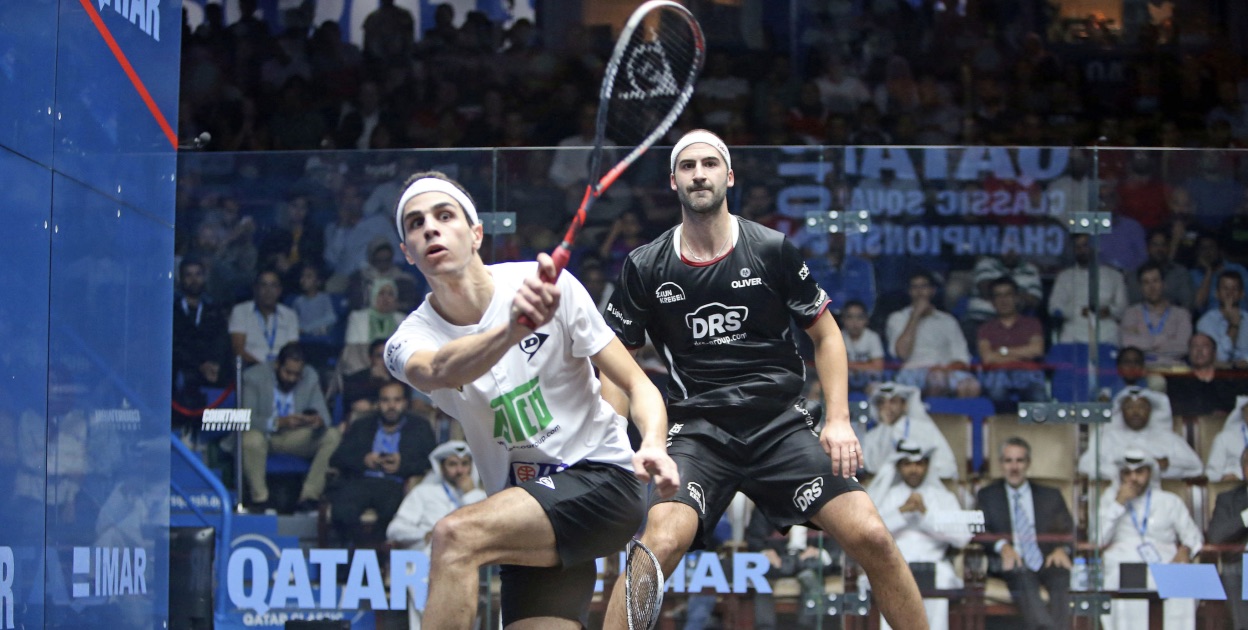
Egypt’s Ali Farag (left, in action against Germany’s Simon Rosner) will be top seed at the PSA Men’s World Championship in Qatar in November
Top four seeds all from Egypt in men’s showpiece event
By SEAN REUTHE – Squash Mad Correspondent
The world’s greatest players, led by World No.1 and defending champion Ali Farag, will battle for the most prestigious title on the men’s tour when they compete in the 2019-20 PSA Men’s World Championship in Doha, Qatar, between November 8-15, 2019.
The Khalifa International Tennis and Squash Complex will feature 64 of the world’s leading male players as they compete for a share of the $335,000 prize fund, with 24 nations represented across the draw. In addition to capturing the trophy and the lion’s share of the prize money, the winner will also qualify for the season-ending PSA World Tour Finals.
Three former World Champions feature in the entry list, including top seed, reigning champion and 2018 Qatar Classic champion Farag, 2017 champion Mohamed ElShorbagy and 2016 winner Karim Abdel Gawad.
They, along with 2018-19 runner-up Tarek Momen, take the first four seeded positions as Egypt continue to dominate on the world stage, but they will be joined by the likes of New Zealand’s Paul Coll, Germany’s Simon Rösner, Peru’s Diego Elias and Colombia’s Miguel Angel Rodriguez, all of whom will be aiming to become the first non-Egyptian winner since Frenchman Gregory Gaultier in 2015.
That year’s runner-up Omar Mosaad, 2010 runner-up James Willstrop and the talented Mohamed Abouelghar, who reached the final of the 2018-19 CIB PSA World Tour Finals on his last PSA appearance, will also take to the court in Doha.
Some 56 of the world’s top 58 players have entered the draw, with the final eight spots comprising four winners of World Championship qualifying events, two World Squash Federation invitees and two wildcards picked by the Qatar Squash Federation.
Three Qatari men will appear in front of their home crowd, including the country’s No.1 player, Abdulla Mohd Al Tamimi, and wildcards Syed Azlan Amjad and Hamad Al-Amri.
All matches will be held at the Khalifa International Tennis & Squash Complex, with play split between the glass court and the ‘traditional’ plaster side courts. Fixtures from the glass court will be streamed live on SQUASHTV (rest of world), Eurosport Player (Europe only) and the official Facebook page of the PSA World Tour.
Ali Farag triumphs in the last Qatar Classic tournament
2019-20 PSA Men’s World Championship, Khalifa Tennis and Squash Complex, Doha, Qatar, November 8-15.
Entry List:
1) Ali Farag (EGY)
2) Mohamed ElShorbagy (EGY)
3) Tarek Momen (EGY)
4) Karim Abdel Gawad (EGY)
5) Paul Coll (NZL)
6) Simon Rösner (GER)
7) Diego Elias (PER)
8) Mohamed Abouelghar (EGY)
9) Miguel Rodriguez (COL)
10) Marwan ElShorbagy (EGY)
11) Saurav Ghosal (IND)
12) Joel Makin (WAL)
13) Omar Mosaad (EGY)
14) Fares Dessouky (EGY)
15) Zahed Salem (EGY)
16) Gregoire Marche (FRA)
17) Daryl Selby (ENG)
18) James Willstrop (ENG)
19) Ryan Cuskelly (AUS)
20) Declan James (ENG)
21) Mazen Hesham (EGY)
22) Cesar Salazar (MEX)
23) Tom Richards (ENG)
24) Adrian Waller (ENG)
25) Mostafa Asal (EGY)
26) Leo Au (HKG)
27) Mathieu Castagnet (FRA)
28) Nicolas Mueller (SUI)
29) Greg Lobban (SCO)
30) Raphael Kandra (GER)
31) Tsz Fung Yip (HKG)
32) Eain Yow Ng (MAS)
33) Max Lee (HKG)
34) Borja Golan (ESP)
35) Campbell Grayson (NZL)
36) Lucas Serme (FRA)
37) Youssef Soliman (EGY)
38) Iker Pajares Bernabeu (ESP)
39) George Parker (ENG)
40) Arturo Salazar (MEX)
41) Chris Simpson (ENG)
42) Alan Clyne (SCO)
43) Youssef Ibrahim (EGY)
44) Karim Ali Fathi (EGY)
45) Abdulla Mohd Al Tamimi (QAT)
46) Ivan Yuen (MAS)
47) Todd Harrity (USA)
48) Ramit Tandon (IND)
49) Richie Fallows (ENG)
50) Mohamed El Sherbini (EGY)
51) Karim El Hammamy (EGY)
52) Mahesh Mangaonkar (IND)
53) Tayyab Aslam (PAK)
54) Ben Coleman (ENG)
55) Nathan Lake (ENG)
56) Edmon Lopez (ESP)
57) Aqeel Rehman (AUT)
58) Ryosei Kobayashi (JPN)
59) Benjamin Aubert (FRA)
60) Auguste Dussourd (FRA)
61) Shawn Delierre (CAN)
62) Kristian Frost (DEN)
Wildcard) Syed Azlan Amjad (QAT)
Wildcard) Hamad Al-Amri (QAT)
Report by SEAN REUTHE (PSA). Edited by ALAN THATCHER.
PSA website: www.psaworldtour.com
Pictures courtesy of PSA
Nick Matthew Academy sparks a week of special events in the build-up to World Squash Day
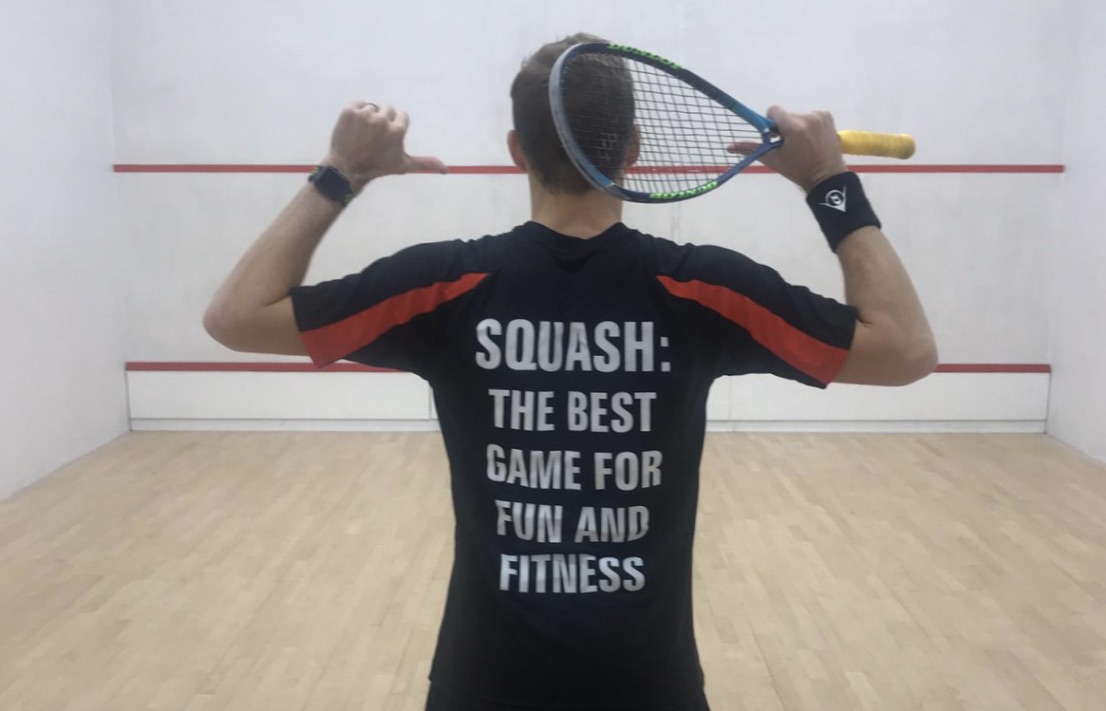
Former world champion offers free taster sessions at Hallamshire
By ALAN THATCHER – Squash Mad Editor
Former world champion Nick Matthew is leading a whole week of activities at the Hallamshire Club in Sheffield in the build-up to World Squash Day.
Nick, who lifted the world title three times, alongside a hat-trick of British Open triumphs, is quickly making a name for himself as an inspirational coach after hanging up his racket on the PSA World Tour last year.
He still appears in the England Squash Premier Squash League (PSL), winning for Nottingham against Newcastle earlier this week. And his Nick Matthew Academy is growing steadily alongside his coaching commitments in the States and popular Wolf On Tour exhibition nights all over the world.
For World Squash Day, Nick said: “Not only are we planning a great day’s worth of activities on World Squash Day but we have a special week’s worth of events in the build-up.
“This starts on Friday October 4 with our Season Launch night, where all Hallamshire members will get the chance to hit with our top players followed by a ‘Pro Show’ from the resident pros.
Nick gets the message across: Squash is the very best game for fun and fitness!
“On the weekend of October 5th-6th we will be hosting the Nick Matthew Junior Open, an England Squash sanctioned Bronze event, then on Wednesday 9th we have our first home Yorkshire League match of the season featuring some hacker who used to be half decent plus a host of upcoming players from my Academy!”
Nick added: “On Thursday 10th we are hosting a special ‘Open evening’ of the Nick Matthew Academy, which will be open to all junior players from far and wide.
“The session runs from 4pm-5.20pm (development players) and 5.20pm-6.40pm (elite players).”
Are you staging an event for @WorldSquashDay?
Check out our photos and videos (including this one⬇️) that you can download and use on your social media channels to entice players to your event ?https://t.co/Z4lj5l5HCf#WorldSquashDay #Squash @nickmatthew pic.twitter.com/EzoFdifVge
— ??????? England Squash (@englandsr) October 2, 2019
The sessions are free of charge and open to all juniors wishing to further their development in squash.
This is a great opportunity to get on court with Nick Matthew, Neil Guirey and learn from Mark Campbell on the fitness side of the game.
If you would like to book a place, please email Jayne Bonner: [email protected]
Hallamshire also have a full programme of fun activities on World Squash Day.
Also published on the World SquashDay website: www.worldsquashday.net
Mercedes-Benz Partners With Venturi Formula E Team

STUTTGART, Germany – Mercedes-Benz has announced a technology supply agreement with Formula E team Venturi Racing.
Venturi Racing will run two examples of the new Mercedes-Benz EQ Silver Arrow 01 alongside the cars fielded by the works Mercedes team, in order to accelerate the manufacturer’s learning curve in its debut Formula E season.
The technology supply will comprise the cooling system, rear frame, rear suspension, dampers, software, onboard electronics and wiring, as well as the brand-new powertrain (including inverter, motor, rear-axle components and energy management software) designed and developed at Mercedes-AMG High Performance Powertrains (HPP), the Daimler group’s global centre of excellence for high-performance hybrid technology.
“We are delighted to welcome Venturi Racing to the Mercedes family ahead of our first Formula E season,” said Ian James, Team Principal of the Mercedes-Benz EQ Formula E Team. “At Mercedes-AMG High Performance Powertrains, we have accumulated a huge amount of knowledge in the field of high-performance electrified power units over the past few years, which will not only benefit our new Mercedes-Benz EQ Formula E Team but also Venturi Racing. Running four cars on track in our debut season will accelerate our progress towards the ultimate goal of fighting for race wins.”
“This development marks a significant step forward for the team and, with my longstanding relationship with Mercedes-Benz, I feel very confident that we will enjoy a strong working partnership with our new powertrain suppliers”, added Susie Wolff, Venturi Racing Team Principal. “We made good progress in season 5 but our plans for season six are even more ambitious and we are doing everything within our power to make sure that we are as competitive as possible before we head to Saudi for the season opener.”
“We are taking the expertise we’ve built up over the last decade and applying it to the new challenge of Formula E,” said Andy Cowell, Managing Director of Mercedes-AMG High Performance Powertrains. “Working together with Venturi Racing, we will be able to increase our rate of learning in our debut season, and what’s more, with a well-established team, who have been part of the series since the very first year. The lessons learned and the technologies we are working on at the race track will also be incorporated into the development of road-going vehicles over time, so the entire Mercedes-Benz family will benefit as a result.”
“We are proud to welcome Mercedes-Benz to the Venturi family as our powertrain partner for season six”, added Gildo Pastor, President, Venturi Automobiles. “Pairing our experience in high-performing electric vehicles with the racing pedigree of Mercedes is a significant step towards strengthening our position in a racing formula that is becoming ever-more-competitive. We’re all excited about this new era for the team and I’m confident this will be the start of a great journey with our new colleagues in Stuttgart and Brixworth.”

CLERMONT, Ind. – If things go according to plan, Sam Mayer will head into Saturday night’s Herr’s Potato Chips 200 at Lucas Oil Raceway as a champion.
Mayer will make his eighth appearance of the ARCA Menards Series season at the .686-mile oval located about 10 minutes to the west of the famed Indianapolis Motor Speedway. Mayer will be racing at Lucas Oil Raceway the day after he hopes to lock up his first NASCAR K&N Pro Series East championship on the demanding one-mile Dover Int’l Speedway.
Mayer has three victories in eleven K&N Pro Series East starts this season, and has a comfortable 30-point lead heading into the season finale. Once the checkered flag waves on Friday afternoon in Delaware, Mayer will make the trek to Indianapolis and attempt to earn his first career ARCA Menards Series victory.
The 16-year-old Franklin, Wis., native has been close on several occasions in 2019, finishing second to points leader Michael Self at Salem Speedway in April and leading on the last lap while battling Ty Gibbs for the win at World Wide Technology Raceway before settling for third.
A win at Lucas Oil Raceway would be a great way for Mayer to close the season.
“We have had so much success this year, but always came short from a win in the ARCA Menards Series,” Mayer said. “I hope that the momentum we have now, and hopefully after Dover that can rocket us into victory lane Saturday. Mardy (Lindley, crew chief) and I have been working really hard to get better and better and we both are confident in what we will bring to the racetrack to close out our ARCA season.”
Mayer’s performances in the ARCA Menards Series have been strong from the start. In seven previous starts, he’s finished in the top five six times. In fact, the only time he’s failed to finish in the top five was in his first start of the season which was cut short due to mechanical failure.
Despite his youth, which is only surprassed by his even more youthful looks, Mayer has been a constant threat in any race he’s been in throughout 2019.
He’d like to carry that momentum on as he makes his second visit to Lucas Oil Raceway, where he finished seventh last year. Mayer adapted quickly to the tricky layout that has the racing groove next to the outside wall. Going back to a track he has previous experience gives him even more confidence.
“Coming back to a place I’ve been to always helps me as a driver,” Mayer said. “I don’t have to go through an entire learning curve at the track again. The team and I tested at Lucas Oil Raceway a few weeks ago and had a really solid Chevy Accessories Chevrolet. I feel like we have an amazing shot to go get a win.”

Millennial Esports Building Dedicated Racing Arena

MIAMI – The world’s first dedicated esports racing arena will be built by Millennial Esports Corp in Miami with the state-of-the-facility scheduled to open in 2020.
The new facility is part of Millennial Esports’ push to professionalise global esports racing competition. The new 12,000 square-foot arena will be located in the prominent entertainment district of Wynwood in Miami — known for restaurants, breweries, retail areas, and outdoor murals. Millennial has secured 2.8 million in private construction financing to complete the build out of the facility.
The esports arena will feature 30 racing simulators which can be raced on individually, linked with the other racing rigs in the building or globally networked to compete against drivers from all over the world.
Professional drivers can also take the next step with the installation of a full-size full-motion simulator — the same type as used by major professional race teams around the world.
The arena build is a continuation of plans hatched by Millennial Esports with its controlling stake in specialist racing simulator constructor, Allinsports in August. Founded in 2008 by ex-Formula One engineer Anton Stipinovich, Allinsports not only manufacture high-end racing simulator systems used by leading race teams across the globe, but also produce the eRacer esports simulator rigs that will be used in Millennial Esports’s upcoming World’s Fastest Gamer competition.
“Creating our first arena is an important step in Millennial Esports’ goal of taking esports racing to an entirely new level,” Millennial Esports President and CEO, Darren Cox said.
“Allinsports already have a driver training simulator facility in Miami, but our new arena will take esports racing to an entirely new level. Esports is the fastest growing sport in the world, but the racing genre of esports is ready to take a massive leap.
“Our goals are for this arena to be the first of many located around the world. These centers will hold major local and international competitions, be used for both amateur and professional driver training and also stage major corporate events.
“Nobody has built anything like this at this level — we want this to be the Formula One of racing esports facilities — and the people of Miami will be the first to enjoy this opportunity to develop their skills.”
Allinsports was founded by South African-born ex-Formula One engineer Anton Stipinovich. His Formula One career included stints at Ferrari, McLaren, and Red Bull — scoring multiple F-1 world championships and more than 80 race wins.
“Our Miami Arena is going to be quite unique because it’s not only going to be an esports arena, it will be a driver academy and allow young racers to progress through the ranks of esports and real-world racing,” Allinsports President, Anton Stipinovich said.
“Simulators have changed the world in motorsport. Drivers have become a lot more scientific and much better prepared. You can see this in today’s Formula 1 racing where you have young drivers like Lando Norris and Max Verstappen coming up through the ranks very fast thanks to their esports experience.
“US motor racing, South American motor racing, everybody wants to come to Miami. It’s an excellent location, and there are moves to host a Formula 1 race here. It’s really just a showcase for us to show off the first of many different arenas.”
Allinsports existing esports training facility is already a popular spot for prominent races including ex-Formula One World Champion and Indy 500 champion, Emerson Fittipaldi, plus fellow Formula One aces Rubens Barrichello and Juan Pablo Montoya.
“Simulators are extremely important because technically, they are so close to driving the real thing,” said Fittipaldi
“You learn the track before you even arrive – where to brake, where to turn, even before arriving at any track in the world. And the feedback for the driver, the reaction, the reflex, the coordination, it’s a mental test and mental development for a young driver. I wish, in my time, we had simulators. My life would be much easier!”
Fittipaldi has high hopes for simulators and esports racing,
“There are so many top talents in simulators that went directly into real racing and are doing well. They are very competitive, and I’m sure a top simulator driver can be a potential world champion,” he said.
“There’s so much competition in esports racing, so many championships to enter and it’s so much fun to be an esports driver. It really is the future for our sport; in fact, it’s not the future; the future is already here.”

Alex DeBrincat has been known as a smaller player with a big game. Now he has a paycheck to match that game.
The Chicago Blackhawks announced Thursday that they have signed the 21-year-old to a three-year extension with an annual average value of $6.4 million. DeBrincat is in the final year of his entry-level contract with an AAV of $894,166.
DeBrincat is coming off a season in which he scored 41 goals and added 35 assists. He became the first Blackhawks player to score 40 or more goals at age 21 or younger since Jeremy Roenick in 1990-91.
The Cat is BACK!
Alex DeBrincat has signed a 3-year contract extension that runs through the 2022-23 season, with an AAV of $6,400,000. #Purr #Blackhawks pic.twitter.com/rF4ztP9YON
— Chicago Blackhawks (@NHLBlackhawks) October 3, 2019
During his rookie season in 2017-18, DeBrincat led the Blackhawks in goals with 28.
Despite gaudy offensive numbers in the minors -- during which he skated on the same line with Connor McDavid for a time -- DeBrincat slipped to the second round of the NHL draft because of his 5-foot-7 stature. That size hasn't stopped the Farmington, Michigan, native from becoming one of the top snipers in the NHL.
The Blackhawks open the 2019-20 season Friday in Prague, Czech Republic, against the Flyers.


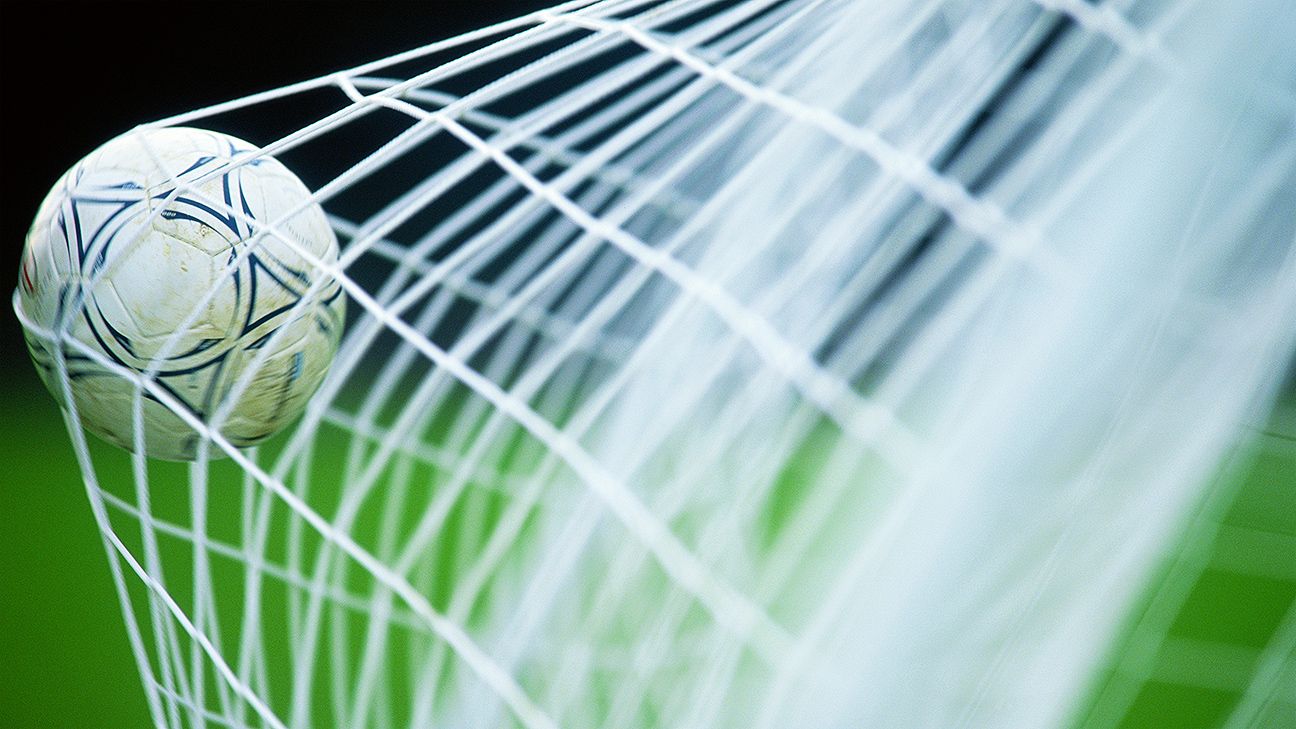
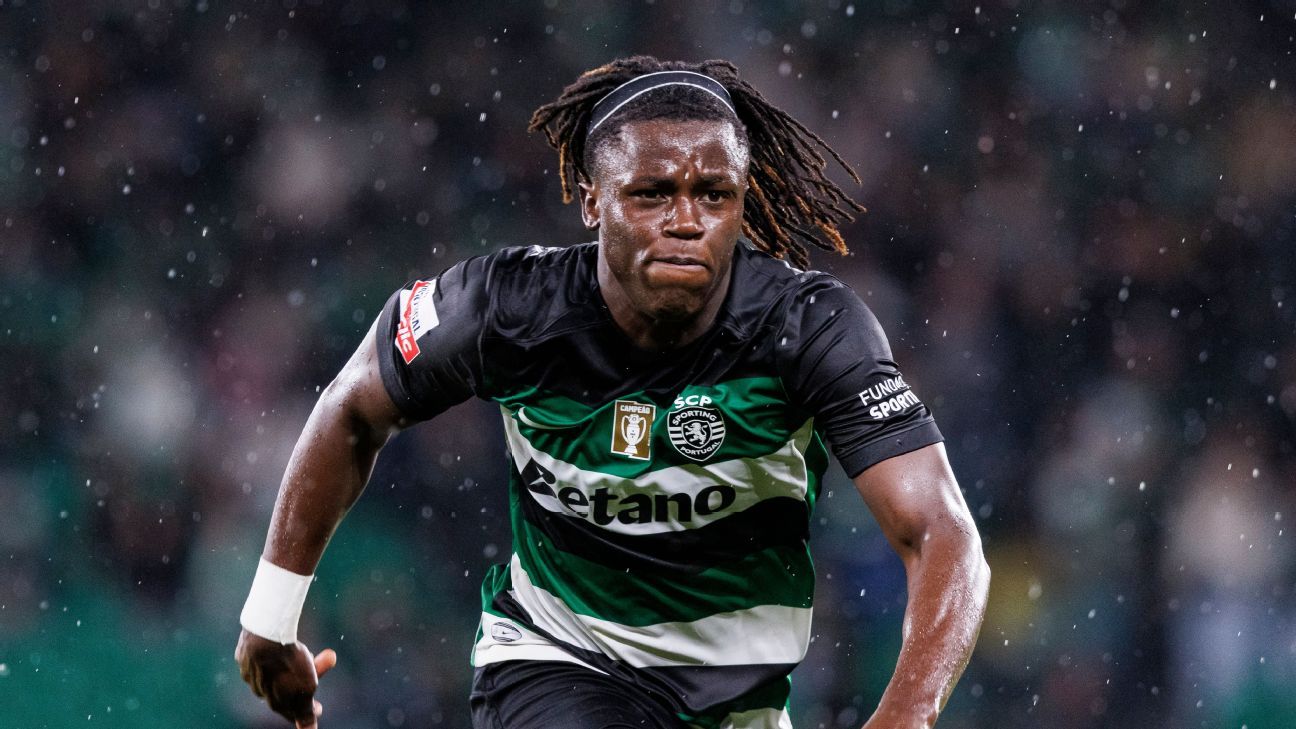
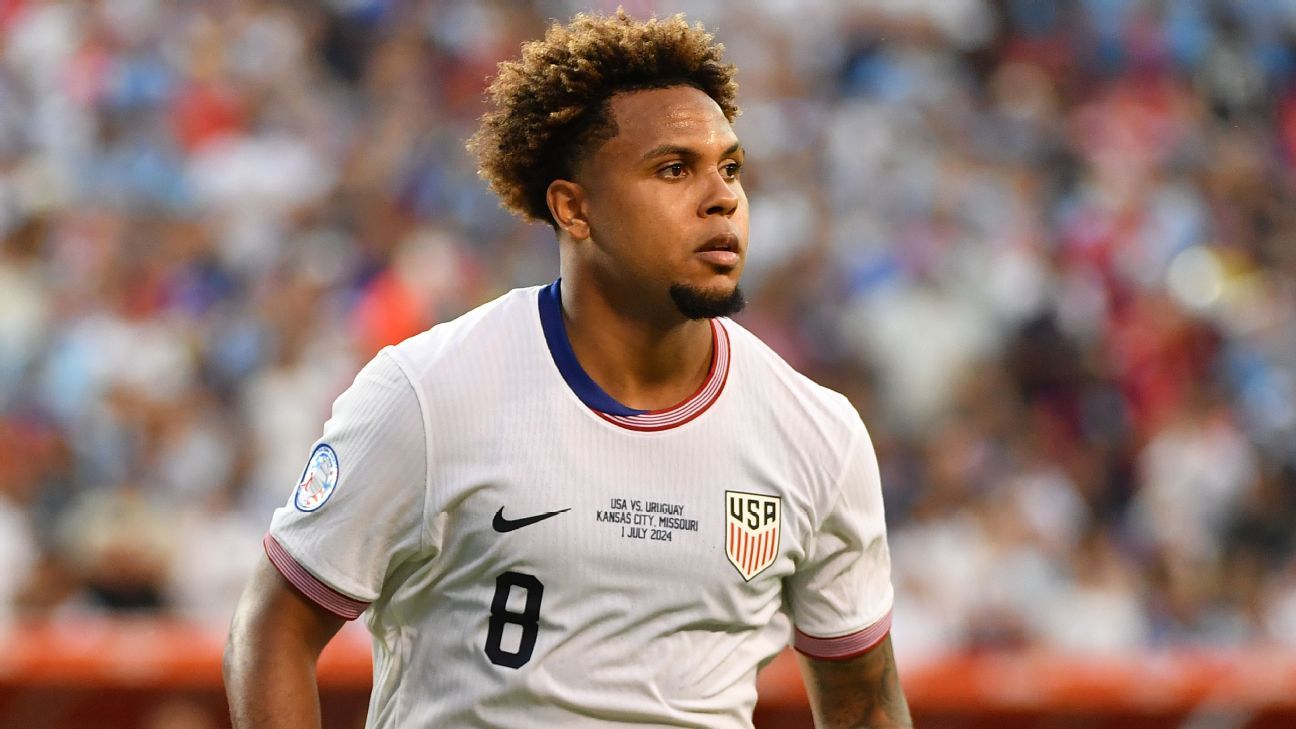





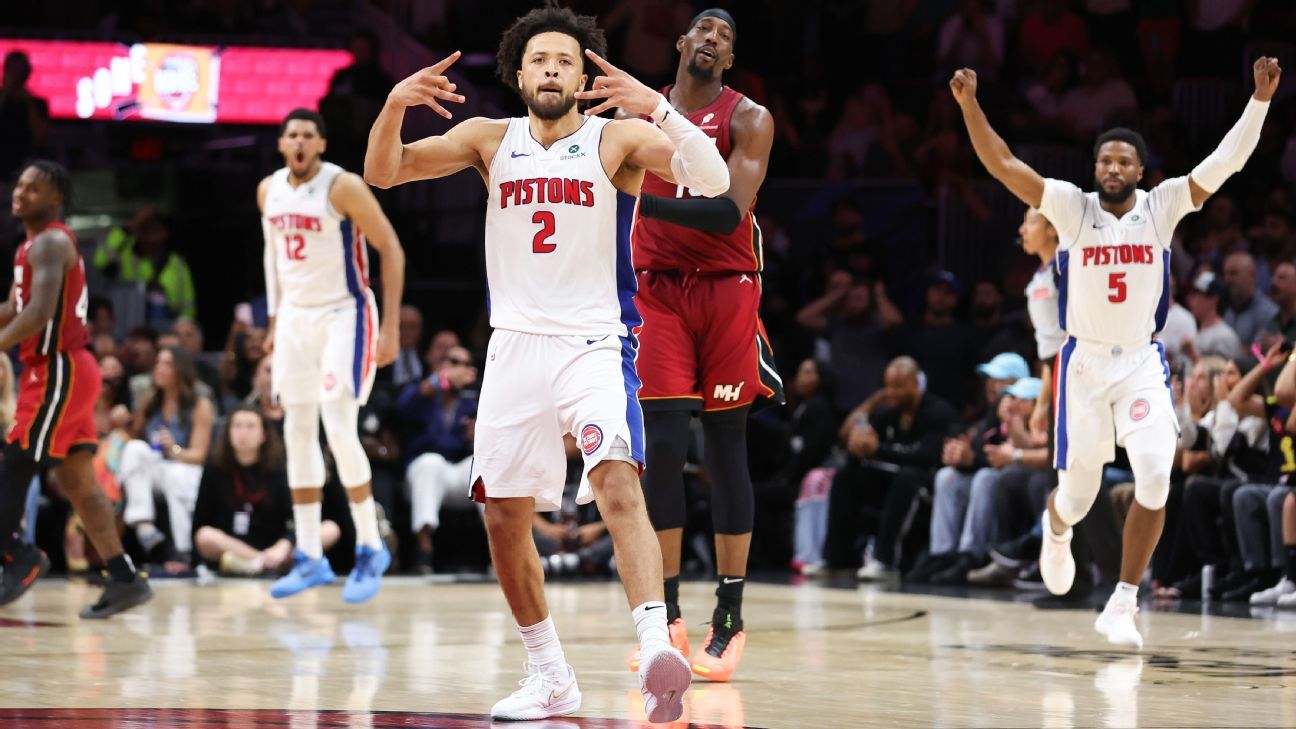


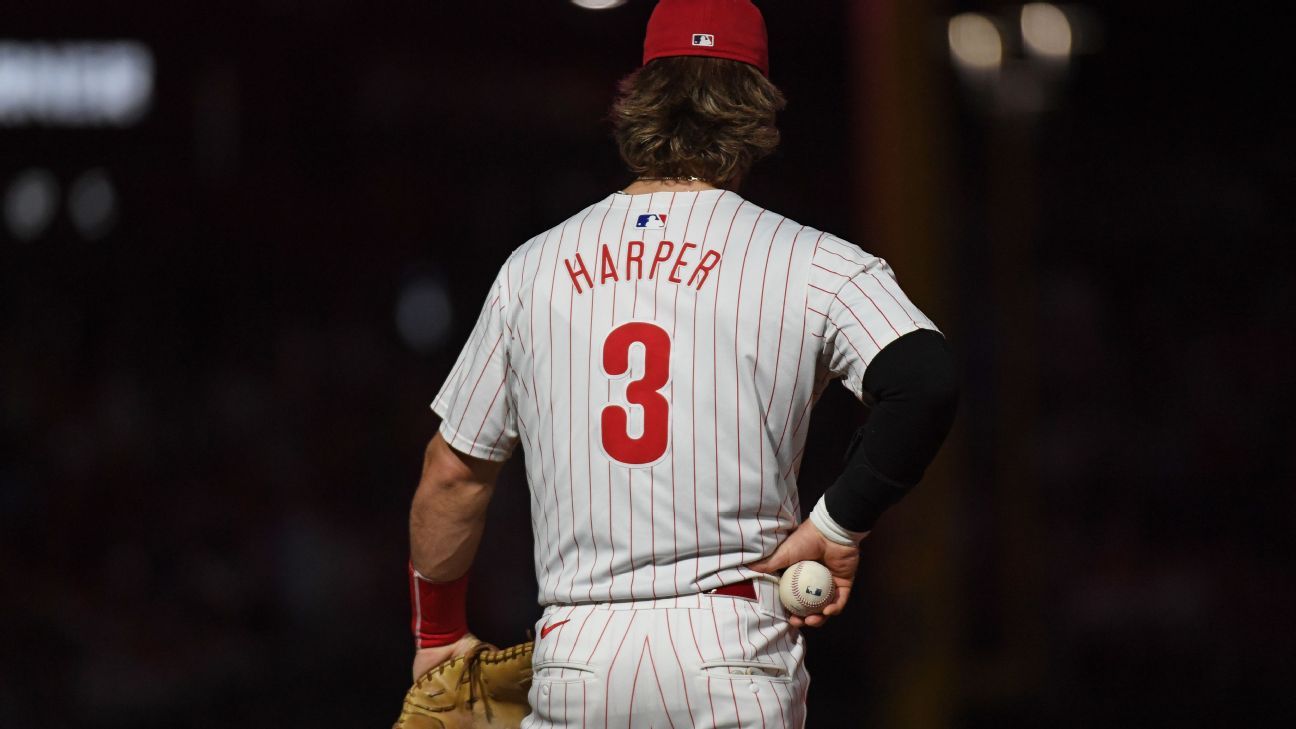

 Phone: (800) 737. 6040
Phone: (800) 737. 6040 Fax: (800) 825 5558
Fax: (800) 825 5558 Website:
Website:  Email:
Email: 






